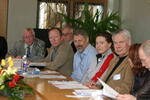Main challenge
In many European countries urban areas are magnets that attract people from villages, smaller towns and rural districts, because cities offer more hope for jobs, education, cultural and leisure activities, health care and better living standards. At the same time rural areas and small towns located far from the large cities or other growth centers are facing:
• downsizing and ageing population;
• out-migration of young people;
• high unemployment because of loss of jobs in traditional sectors,
• lack of novel ideas for increasing in new jobs, businesses and industries;
• limited access to education.
These places may be small industrial towns, service centers, agricultural or other primary production areas, like fishing, forestry or mining areas, or they may rely on tourism and cultural heritage. In order to build their competitiveness, local authorities must look for different ways to open their inhabitants to innovations – as entrepreneurs, as consumers, and as citizens.
The Innovation Circle project addressed this challenge by training people from different sectors within the municipality/region about how to work together to change their communities into attractive place for living, working and visiting.
Definition of Innovation
We understand innovation as creating value out of new ideas, new products, new services or new ways of doing things. Innovation process involves interaction and collective learning as well as interplay between researchers and those with practical knowledge and experience.
Activities
The Innovation Circle project was organized into three work packages.
1. Innovation Academy - a problem based training program to improve partners’ competence for working with innovations and stimulation of entrepreneurship in their regions. The Innovation Academy consisted of 5 workshops for adults and 2 youth summer camps. The participants were trained on topics like:
a. Territorial development strategies;
b. Designing attractive towns and places;
c. Changing culture of governance;
d. Entrepreneurship and business development;
e. Managing of innovative projects.
2. Local Actions
• Step 1 – Each project partner forms a Community Generator Group which is responsible for the analyses of local needs and initiation of innovative ideas for their community development. The Community Generator Group should consist of representatives from public and private sector, non-governmental organizations and young people.
• Step 2 – the Community Generator Group elaborates the Innovation Charter – a document which presents the vision for the community and possible innovation/development projects which could bring attractiveness, optimism and employment to the place. The document is presented to the local municipal council and further developed into a concrete action plan.
• Step 3 – Community Generator Groups in close cooperation with other project partners implement innovative local projects (at least 50 in total).
• Step 4 – The best projects are presented in the final Innovation Circle event “EXPO 2007”.
3. Innovation Forum - experience exchange among project partners through annual conferences and circulation of information (newsletters, video materials, a web-site, brochures, research reports).
The EXPO 2007 became the climax of the Innovation Circle project and displayed 53 local/regional/transnational projects presented by the IC participants. A jury assessed the various projects and handed out awards in different categories.
Project duration
Project budget

